Grabbing poverty by the horns

Communities are provided with an initial stock of buffalo and fully trained in husbandry techniques and pond monitoring. Credit - Everland.
Grabbing poverty by the horns: Ecosystem restoration of watering holes in Cambodia’s Northern Plains
In 1966, following an extended field trip to Cambodia’s Northern Plains, Charles Wharton wrote, “About 500 years ago a civilisation whose art and architecture has been said to dwarf the wonders of Egypt, Greece, and Rome laid down its arms and entered a non-martial and non-material period of its history. In so doing much of the environment that once supported its immense cities and armies was abandoned to a few scattered villagers who, with the aid of the agency of fire, have since maintained this depopulated island of northern Cambodia as one of the last great refuges for herbivorous mammals in all of southeast Asia. In the far reaches of this small Asian kingdom can be found a remarkable array of wild hoofed ungulates. Here, one can observe herds of banteng, gaur, water buffalo, and two rare species approaching a critical minimum in southeast Asia, the kouprey, and the Eld's deer.”
Fast forward to the present day, and in this remote part of Cambodia, the same species that have escaped extinction now exist only in small numbers. We know that these wild ungulates (hoofed animals) were ecosystem engineers within this unique landscape. Their use of seasonal ponds in the dry season would prevent plant overgrowth, keeping the ponds open and deep for extended periods of the dry season. As they migrated across the landscape, they dispersed seeds and transferred insects and other animals to great distances. With these wallowing animals' disappearance, the vital water sources which act as feeding grounds for Critically Endangered birds quickly become overgrown and unusable. The lifeblood of this “last great refuge” is becoming scarcer.

As Wharton highlighted in his iconic article, Indigenous and local communities also call these lands their home, and they play an integral part in shaping the Northern Plains Landscape. With more than 25 villages scattered throughout this vast 5,000km² protected area network, conservation action must consider their livelihoods and needs.
With support from the Darwin Initiative, Wildlife Conservation Society (WCS) Cambodia and the Provincial Department of Environment support four Community Protected Areas (CPA) work to restore these seasonal ponds, using a distant relative of the once abundant wild water buffalo. Small herds of domestic water buffalo have been established, with community members given a stipend to control their movements within a selected number of seasonal ponds. The community records their daily activity, and their effect on the pond is monitored monthly by a well-trained community group that measures the changes in depth, vegetation, soil, and other factors, comparing them with ponds that do not have buffalo. The surveys are complemented by in-depth studies from the Biodiversity Monitoring Team of the Northern Plains Landscape REDD+ Project, in conjunction with a student from the Centre for Biodiversity Conservation at the Royal University of Phnom Penh who monitors water quality, nutrient levels, pH, and general biodiversity of the pond life. Early results are encouraging, with ponds frequented by buffalo possessing characteristics more favourable for globally threatened bird species such as the giant ibis, the sarus crane, and lesser adjutant storks.

The benefit to the local ecosystem is only part of the story. These buffalo herds are well-fed, vaccinated regularly by partners at the Provincial Department of Agriculture, Forestry and Fisheries, dewormed, and treated for any illnesses or injuries as a matter of priority. Their quality rivals that of other domestic buffalo and demands a higher market price. The project aims to keep the buffalo herds with less than 20 individuals so that when surplus animals are sold, the money goes straight to the bank account of the CPA Committee, which can, in turn, use that money to support their monthly patrols, pay for protection of bird nests, and support the other conservation activities of their community.
The community members involved with the project, supported by technical assistance from Laos Buffalo Dairy experts, have built basic dairies within their village. These simple structures use only locally available materials and are complemented with technologies such as gas-producing biodigesters that feed off the manure produced by the herd. Before the buffalo leave for the day to wallow in the seasonal ponds, each nursing mother has a small amount of milk taken, with which the community creates a nutritious school meal for the local primary schools – cooked using the gas from the manure of the buffalo herd.


Nutrient deficiency is a key issue for these rural communities, and the project aims to combat this by introducing buffalo milk products through nutrition groups and school meals. As the community improves its dairy skills, market linkages will be established to sell organic buffalo milk to cheese and other dairy product producers in main cities close to the project area. These proceeds will further bolster the financial sustainability of the community activities and create a stand-alone project that benefits the local wildlife and the community. Each community member involved in the project receives monetary payment from the CPA funds, with all profit from the buffalo milk and meat sales going to the same.
Further opportunities are planned, including linking the buffalo activities to ecotourism. For community involvement, they simply need the will to participate; starting stock of buffalo and all training is provided by the project. In return, the communities must comply with four simplified rules of the protected area law that encourage sustainable practices, compliance of which is monitored by the NPL REDD+ Project partners.
Written by Nev Broadis. For more information on this Darwin Initiative Main project 30-022, led by WCS, please click here.


The Biodiversity Monitoring Team of the NPL REDD+ Project provide monitoring and training to local communities. Credit - Everland.

 Back
Back